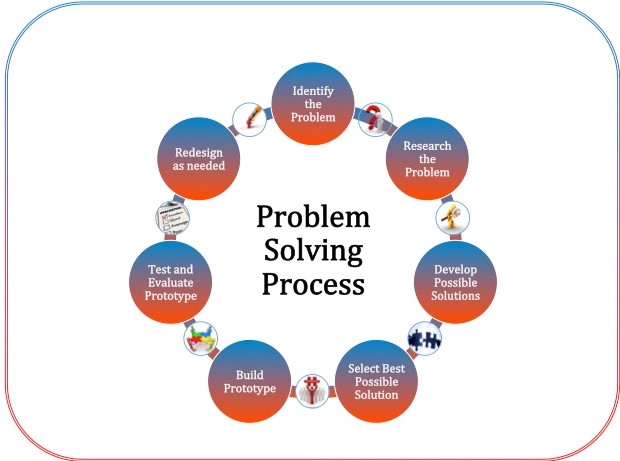Project 4 How do airplanes fly?

A Project-based STEM+Computing Inquiry
About
This project was supported by the National Science Foundation (NSF) under Grant Number 1640228. Any opinions, findings, conclusions, or recommendations expressed in this project are those of the author(s) and do not necessarily reflect the views of the National Science Foundation. If you have any questions, please contact Dr. Dazhi Yang at dazhiyang@boisestate.edu or use our Contact Form.
Description
This project-based scientific inquiry project: How Do Airplanes Fly? is centered on airplane design and flight control components. It requires students to apply knowledge from physics, mathematics, engineering, technology and computing to solve problems. In this project, students work in small groups to explore and research different types of airplanes, key concepts of why an airplane can fly, turn and be stable, flight control components, and the associated physics and engineering principles. Then, students design a type of an airplane and test their design.
Implementation
Please refer to the weekly activities (such as Week 1 Session 1 in the left sidebar and Resources from the sections below) for detailed information on how to use this project either in a classroom or an informal setting such as in community centers' after-school programs. The twice weekly sessions were originally designed to be 90 minutes in length, including a 10 minute break in the middle of the session. See photos of prior implementations on the projects' photo pages.
Week 1
Session 1
Questions
How do airplanes fly?
How do airplanes take off and stay in the sky?
Goal
To understand the project goal
To understand the problem solving process
Activities
Watch videos on flight
Overview of airplane project
Create team mission patches/airplane logos
Create paper airplanes for distance and airtime and collect data
Resources
Video on Airplanes and Flight
Paper Airplane Websites with instructions
Outcomes
Journal keeping
Understanding the project goal
Paper Airplane Design
Session 2
Questions
How do planes take off and stay in the sky?
How does the design of the plane affect flight?
Goal
To understand the design process
To understand the four forces of flight
Activities
Redesign the paper airplanes
Resources
Flight interactive
Bill Nye Video
Outcomes
Redesigned airplane
How do airplanes fly?
Intro 5-10 minutes
Briefly explain to the students that for the next eight weeks we will be learning about airplanes and how they fly. Possible questions to ask, "How many of you flew on an airplane?" Pause, and then "How many of you wonder how airplanes can stay in the sky?"
Then further introduce the project: "We will be learning about the different parts that make up an airplane, the forces at play during flight, and how airplanes fly and stay in the air, We will take on the role of engineers working through the design process of building airplanes, testing, and redesigning our planes, until we are happy with their performance. The last week, we will compete in a contest to determine whose plane flies the farthest and whose planes have the longest flight time."
Video Activity 15-20 minutes
Show students one or more of the following videos:
Group Discussion
After watching the videos, the facilitator asks "Why do you think airplanes stay in the air?"
Possible discussion topics: wings, forward motion of airplane, engines, forces, lift, thrust;
Have students create their hypothesis and record hypothesis and discussions in their notebooks.
Introduce the Problem-solving Process
Introduce the Problem Solving Chart: Facilitator says, "before we begin, let's look at the problem-solving diagram and go over the categories in the diagram". Discuss the chart with the students

Tell the students that over the next several weeks they’ll work through this process while designing their own airplane.
Please mention computational thinking (CT) while explaining the Problem Solving Chart so that students are aware of CT.
Teamwork Activity 5-10 minutes
Students will form groups of three for activities and the final competition project. Once in their groups, they will name their airplane company and design the logo/mission patch for their planes. Students will share the company names and logos/mission patch with their fellow classmates.
Paper Airplane Group Activity Small-group Hands-on Scientific Inquiry 25-30 minutes Part 1
In groups, students make paper airplanes and fly them, observing which designs fly fastest, which fly the farthest, which ones make loops, and which ones didn’t work, etc. (The purpose of is to gather information to use later).
It may be helpful to keep the airplanes they make for the next lesson.
Resources
10 of the Best Paper Airplane Designs
Paper
Student Pre-Survey 20 minutes
Students fill out the pre- survey in the first session to establish the baseline data. The researchers will prepare the surveys. Teachers will collect the completed surveys and return the surveys to the researchers on site.
End of Session Reflection and Debriefing 5-10 minutes
Teacher briefly explains the computational thinking (CT) skill embedded in the Problem Solving Process Diagram. Using the problem solving process diagram, the teacher will ask students to identify what kind of problem solving skills/process/computational thinking they used in this session and explain how they used it. The following are some sample questions that can guide the debrief.
What did I learn today?
What problem solving skills/processes or CT components in this diagram did I use today?
How did I use the problem solving skills/processes/CT components?
How do airplanes fly?
Review Activity 5-10 minutes
Go over the results of the paper airplane activity as a whole group.
Possible questions to guide the discussion:
What planes flew the farthest in your group?
What planes stayed in the air the longest?
What planes were the fastest?
How were the designs that flew farthest different from the ones that flew longest?
If you wanted to design an airplane to fly fast, what would it look like?
What if you wanted it to fly slow and stay in the air longer?
Form your hypotheses and discuss these questions.
Paper Airplane Activity Small-group Hands-on Scientific Inquiry 25-35 minutes Part 2
Review the Problem Solving Chart and explain that today they will be testing and revising their paper airplane designs.
In their groups, students will choose a design to test. Each group must make at least one paper airplane to achieve the best distance and one paper airplane to achieve the longest time in the air (each student should make an airplane).
Students test their design three times and record the results in the flight record worksheet
Based on the results students redesign the plane two more times then test them the same way and record the results in the worksheet.
Students write a journal entry about their results. Possible prompts: Did your last design work better than your first? Why or why not?
Students share their results with the whole group.
Resources
Flight Record Sheet (1 per student)
Paper
Paper airplanes from the previous session (optional)
Problem Solving Process Diagram
End of Session Reflection and Debriefing 5-10 minutes
Teacher briefly explains the computational thinking (CT) skill embedded in the Problem Solving Process Diagram. Using the problem solving process diagram, the teacher will ask students to identify what kind of problem solving skills/process/computational thinking they used in this session and explain how they used it. The following are some sample questions that can guide the debrief.
What did I learn today?
What problem solving skills/processes or CT components in this diagram did I use today?
How did I use the problem solving skills/processes/CT components?
Session 1
Session 2
Paper
Paper airplanes from the previous session (optional)